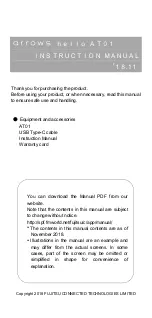
Control Sources
Main Control Source List
4-11
60, 61
Global Phase 1 and 2 (G Phase 1, G Phase 2)
These bipolar global control sources are both rising sawtooth waves that rise from -
1 to +1 with each MIDI clock beat. Like A Clock and B clock, they look for an
external clock signal, and if none is received, they respond to the K2661’s internal
clock.
62, 63
Global Random Variant 1 and 2 (GRandV 1, GRandV 2)
These are also bipolar and global, and generate random control signal values
between -1 and +1 when assigned to a control source parameter. There is a subtle
difference in the randomness of the signals they generate, therefore choosing
between them is a matter of preference.
96
Note State (Note St)
At any moment, any given note is either on or off; this is its Note State. Note State
can be used as a unipolar control source that responds to each note that’s played. It
switches to +1 when the note starts, and stays on as long as the note is held on (by
the sustain pedal, for example), or by holding down the trigger for that note. It
switches to 0 when the note is no longer sustained by any means. For example, if
you play a note, then hold it with the sustain pedal, its Note State is still on (+1)
even if you’ve released the key that triggered the note. As soon as you release the
sustain pedal, the note’s Note State switches to off (0), even if it has a long release
and you can still hear the release section of the note.
97
Key State (Key St)
This is a unipolar control source that responds to the motion of your MIDI source’s
keys (or other note trigger). It switches to +1 when a key is pressed, and switches
to 0 when the key is released. Its effect differs from Note State in that when the key
that switched it on is released, it will switch off even if the note is sustained. If
you’re using a non-keyboard MIDI source, Key State switches to 0 when the
equivalent of a key release is sent.
98
Key Number (KeyNum)
This is a unipolar control source that generates its signal value based on the MIDI
key number of each note triggered. That is, it generates a value of 0 in response to
MIDI key number 0, a value of 64 in response to MIDI key number 64, and so on.
Note that some parameters, such as Enable Sense on the Program Editor Layer
Page, will not accept this parameter. GKeyNum, controller number 129, would be
acceptable however.
99
Bipolar Key Number (BKeyNum)
This is like KeyNum, but generates a signal value of -1 in response to MIDI key
number 0, a value of 0 in response to MIDI key number 64, and a value of +1 in
response to MIDI key number 127.
100
Attack Velocity (AttVel)
This unipolar control source responds to Attack velocity values received at the
K2661’s MIDI In port. Velocity values of 0 cause it to generate a signal value of 0,
while velocity values of 127 will generate a value of +1. All other velocity values
will result in signal values proportionally scaled between 0 and +1. Note that some
parameters, such as Enable Sense on the Program Editor Layer Page, will not accept
this control source. GAttVel, controller number 130, would be acceptable however.
Содержание K2661
Страница 18: ...2 4 LFOs LFO Shapes...
Страница 34: ...3 16 DSP Algorithms...
Страница 54: ...5 4 MIDI Note Numbers Note Numbers for Percussion Keymaps...
Страница 72: ...7 10 System Exclusive Protocol K2661 System Exclusive Implementation...
Страница 82: ...9 4 Upgrading Sample Memory Choosing and Installing a SIMM for K2661 Sample Memory...
Страница 334: ...10 252 KDFX Reference KDFX Algorithm Specifications...
Страница 340: ...11 6 Glossary...
Страница 382: ...12 42 Triple Modular Processing Alphanumeric Buttonpad Entries for DSP Functions...
Страница 392: ...B 6 SysEx Control of KDFX MSB and LSB...
Страница 442: ...D 20 Contemporary ROM Block Objects Controller Assignments Contemporary ROM Block...
Страница 490: ...H 12 General MIDI Standard Mode Controller Assignments...
Страница 492: ...I 2 Live Mode Objects Live Mode Programs...
Страница 498: ...K2661 Musician s Reference Index...
Страница 500: ......
















































